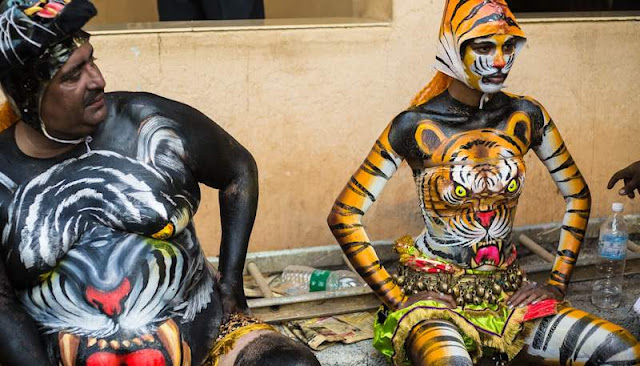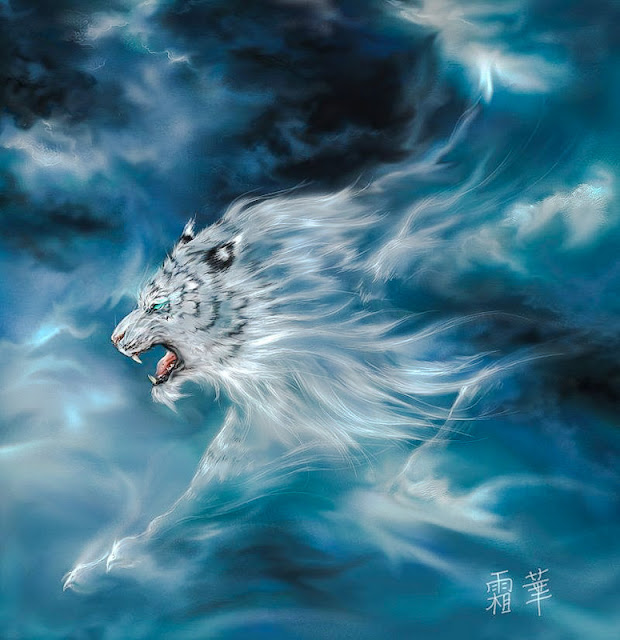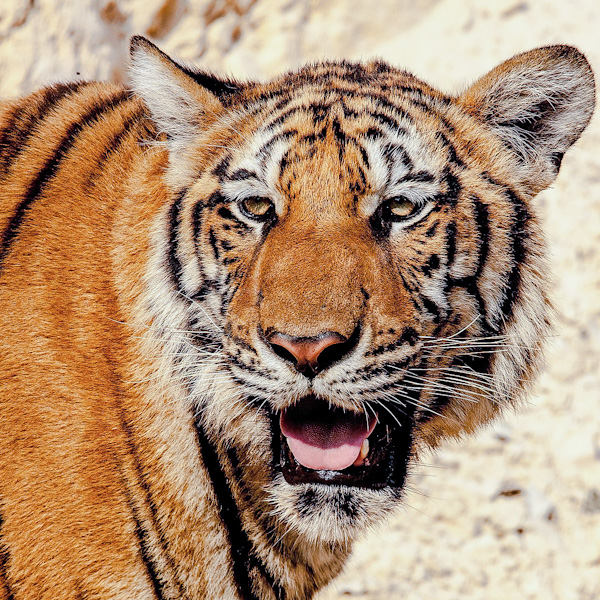Puli Kali - an irreverent look at a tiger festival
Puli Kali is a festival, as I see it, in celebration of the tiger which takes place in Kerala, India. The name of the festival appears to be spelled in two ways. The way that I have spelled it in the title and as follows: 'Pulikkali'. It literally means "the tiger dance". Or it might mean "leopard game", depending upon your interpretation. It seems to be the only major tiger festival in India. Or the only one reported on and searchable on the internet.
 |
| Puli Kali. Image: S & S Pulikali Sangam Kanatukara DESOM |
The festivities take place on the fourth day of Onam celebrations. This is an ancient festival going back over 200 years. And only in 2016 did the organisers invite women to take part 😎. Well, it is India and to be brutally honest, it is somewhat of a misogynistic society or culture. There have been some horrendous reports of rape of women by gangs of men. But that is another story.
 |
| Puli Kali - an irreverent look at a tiger festival. Image in public domain as assessed. A woman participates. They were allowed to in 2016. |
An interesting aspect of this festival is the fantastic way that the participants paint themselves. The result is extremely colourful and very impressive. We are told that a particular combination of tempera powder and varnish makes the paint. The dancers have to remove their body hair and an undercoat is painted onto them which takes 2-3 hours to dry and then a second coat is painted which contains the design.
And so, the entire painting preparation takes 5-7 hours. And I have to say, I think the men with pot bellies are the better canvases for the painting (there are many of them). This is because the tiger's face is painted on the belly extending up to the chest and the nipples. The nipples are where the eyes are painted and the belly is well the muzzle is placed. And if the belly sticks out a little bit it gives a three-dimensional aspect to the painting 😉.
The participants or dancers move in a procession. They are in Pulikkali groups or sangrams. They come from all corners of Thrissur, a city and the headquarters of the Thrissur district in Kerala, India. It is the third largest urban metropolis in Kerala and the 21st largest in India.
The dancers shake their bellies (you see what I mean about the advantages of having a pot belly!) to the beat of the drums through the streets to Swaraji Round, Thrissur (is this a roundabout?). They enact scenes of a tiger preying on an animal and a tiger being hunted by a human trophy hunter (I think I'd remove that aspect of the festival as it needs to be forgotten).
RELATED: Tiger attack – tigers tend to avoid people.
The procession is watched by thousands. The beauty of this festival is the fantastic paintings on the bodies of the participants.
And it is a recognition of the important role the tiger has played in the lives of Indians in India. It is such an iconic species that it is, through this festival, almost worshipped.
It is a great shame, therefore, that over the past hundred years the large population of tigers in India has declined dramatically to a precarious 3,500. This is a festival in celebration of the Bengal tiger which is critically endangered and which lives primarily in India and also in Bangladesh and, further north, in Nepal and Bhutan on the Himalayan foothills.
RELATED: The Tigers of Bhutan.
The Bengal tigers moved up to Bhutan, 4,000 feet above sea level, to remove themselves from interference by humans. They live in the snow, something that you would not expect Bengal tigers to do.




Comments
Post a Comment
Please comment.